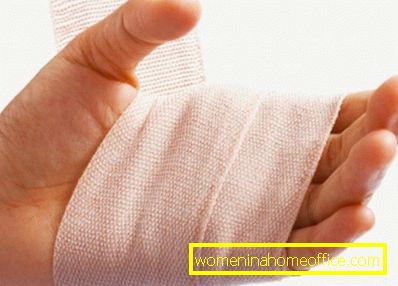Human tetanus
Tetanus is an acute and life-threatening infectious disease caused by bacteria. The mechanism of transmission in tetanus is contact, a disease characterized mainly by damage to the nervous system. Its main features are convulsions and tension of skeletal muscles. Tetanus has been known since ancient times, its occurrence has always been associated with injuries. Now to prevent the disease do routine vaccination.
Tetanus: the main causes of the disease
The causative agent of the disease is an anaerobic bacillus, which is able to form spores and thus remain in the environment for a long time outside the living organism. Once in the human body, bacteria begin to synthesize dangerous toxins tetanolysin and tetanospasmin. Tetanospasmin is a strong biological poison that directly affects nerve cells. At the onset of the disease, the effect of this substance extends to peripheral nerve fibers, which is manifested by the appearance of local muscle contractions. Tetanolizin is a dangerous and potent substance that affects the heart and nerve fibers, destroys blood cells and causes local necrosis of various types of tissue.
The source of infection can be various animals: rodents, herbivores and birds. Bacteria are released into the environment with faeces, contamination occurs on contact with the soil, injuries, accidents, etc. The tetanus bacillus forms a spore and can persist in the soil for a long time and multiply.

Disease symptoms and types of the disease
With a disease like tetanus, the symptoms in children and adults are similar. Due to the type of infection, there are 3 types of the disease:
- Tetanus resulting from injuries
- Due to inflammatory and destructive processes in the body
- Cryptogenic tetanus - methods for producing infection are not known.
The average incubation period lasts from several days to 1 month. In most cases, it does not exceed 1-2 weeks from the moment the agent enters the body. The onset of the disease is always acute, only in rare cases, before the appearance of the main symptoms, there is tension in the muscles and their twitching at the wound site, headaches, general malaise, irritability and sweating.
Tetanus has pronounced first symptoms. The earliest sign of illness can be a nagging pain at the site of infection (wound, abrasion). Even if by the time the damage on the skin healed. There is a complex of early symptoms characteristic of tetanus:
- Stress and contraction of the chewing muscles of the trism, which lead to difficulty opening the mouth.
- Spasms of mimic muscles, the so-called sardonic smile, which gives the face of a sick person a characteristic expression - the eyes are narrowed, wrinkles on the forehead, the corners of the mouth are lowered, and the lips are stretched.
- Swallowing becomes difficult and painful due to convulsive spasms of the pharyngeal muscles.
- Stiff neck muscles are caused by spasms of skeletal muscles due to exposure to dangerous toxins.

Muscle cramps spread to limbs already at the height of the disease. In this hand and foot, they do not capture. Muscle tension is permanent, and even during sleep they do not relax. The contours of the skeletal muscles become clear especially among those people who had a sporting composition before the illness. On the 3rd or 4th day of the disease, the muscles on the abdominal wall become very tense and hard, movements in the lower limbs are limited, and the legs are extended. Also in the process at this time involves the diaphragm with intercostal muscles.
Respiration is superficial and frequent. The allocation of urine and feces becomes difficult because the muscles of the perineum are constantly in good shape. The characteristic position of the patient is tetanus: on the back with the head thrown back, the lumbar region is raised above the bed, you can put a hand between your back and the bed. This condition is called opisthotonus. There are 4 severity of the disease:
Light flow is determined by the incubation period of about 20 days. Trisms, opisthotonus, sardonic smile are moderately expressed. Dr. muscle groups are in low tension. Body temperature may be normal or subfebrile, tonic seizures, as a rule, are absent or insignificant. The development of symptoms occurs within 5-6 days.
The duration of the incubation period for moderate tetanus can be from 15 to 20 days. Clinical signs of the disease develop in 3-4 days. As a rule, seizures occur several times a day, there is also increased sweating and heart palpitations, the body temperature is usually low-grade, but in some cases it can be high.
In severe tetanus, the incubation period is short - from 7 to 14 days. The increase in symptoms observed rapid - for 1-2 days. Seizures with severe form occur very often, several times in an hour, there is severe sweating and tachycardia. Body temperature is high.
If the incubation period is less than 7 days, then the course of the disease is very difficult. This form of tetanus is called fulminant. Seizures of a tonic nature occur every 5 or even 3 minutes. At the same time, they are accompanied by a critically high body temperature, severe tachycardia, and rapid breathing. Also, pronounced cyanosis is observed - the skin becomes blue. With such a course of tetanus there is a high risk of suffocation and death from it.
To determine the prognosis of the disease, special attention is paid to the period between the onset of the initial manifestations and the appearance of the 1st seizures. In the case when this time is less than 48 hours, the forecast is especially unfavorable.
Tetanus: treatment features

Treat tetanus in the intensive care unit. Patients need a protective mode with the exclusion of visual, tactile and auditory stimuli. They feed patients with tetanus liquid food using a probe or by parenteral administration of nutrients (bypassing the gastrointestinal tract).
Since a person is forced to lie in bed all the time, prevention of pressure sores is important. The patient is often turned and changed his position. Bed linen and clothes should be smoothed so that there are no folds that crush and rub the skin.
Serum from tetanus is injected into infected wounds, even those that have already healed. Wounds are also inspected and surgically treated. If there are foreign bodies, they are removed, cut off areas of necrosis and contaminated tissue. To prevent convulsions during these manipulations, a person is given anesthesia. After wound cleaning, their treatment is performed using proteolytic enzymes, because trypsin and chymotrypsin.
An important stage of treatment is the neutralization of toxins of bacteria in the bloodstream, for this purpose, the serum is injected intramuscularly in combination with tetanus immunoglobulins. Before the introduction of immunoglobulins are tested for sensitivity to them. Sedatives and narcotic drugs are used to combat convulsions. Also for this purpose, prescribed muscle relaxants and antipsychotics.
If a person has respiratory disorders, a tracheotomy is performed - a trachea dissection or intubation - the introduction of a special tube into it. Use of muscle relaxants combined with artificial ventilation of the lungs and cleansing the respiratory tract using an aspirator. Also, patients are shown the introduction of humidified oxygen. Some sources say about the good effect of the introduction of oxygen under pressure - hyperbaric oxygenation. So that the disease is not complicated by pneumonia, a coughing and breathing afterburner is done, the patient is often turned around. Bacterial complications are prevented by prescribing antibacterial drugs, for example, on the basis of benzylpenicillin.
See also:Staphylococcus aureus: treatment
Tetanus is an extremely dangerous disease, which is often fatal. Therefore, to prevent infection, when injuries and contact of the wound with the soil, treat the damaged area with hydrogen peroxide. The oxygen that is released will kill the tetanus bacteria, because they are anaerobic, that is, they live in conditions with the absence of this element. After that, immediately consult a doctor, in the hospital you should be given tetanus toxoid serum.